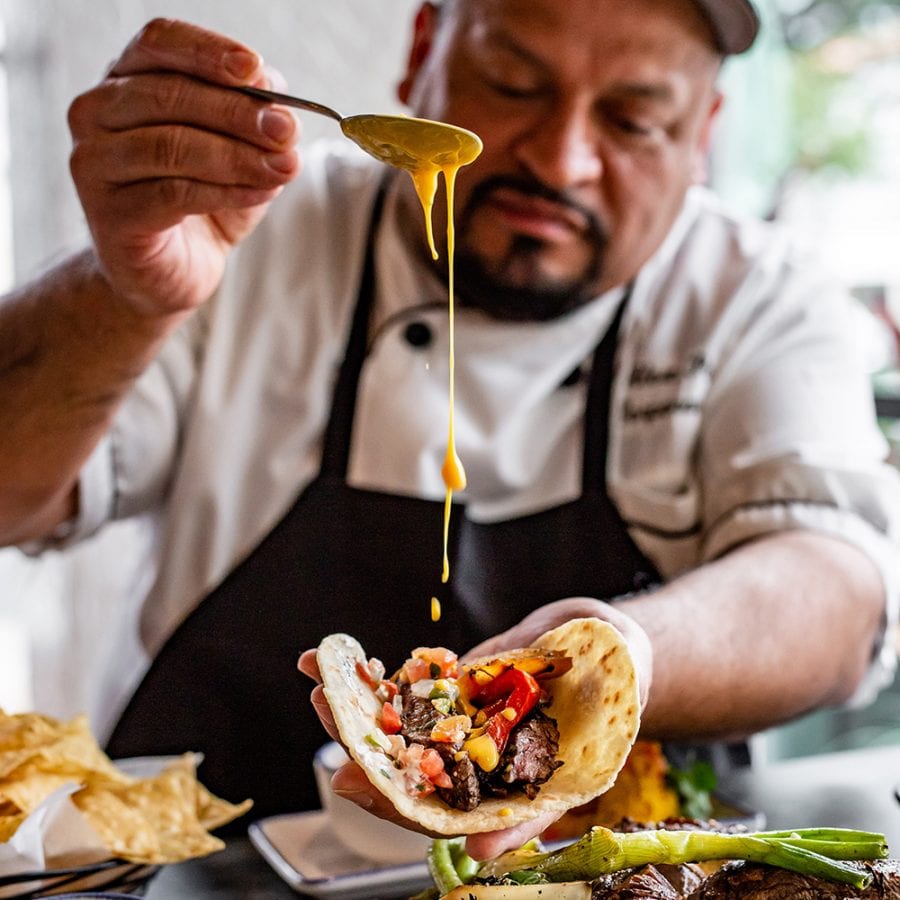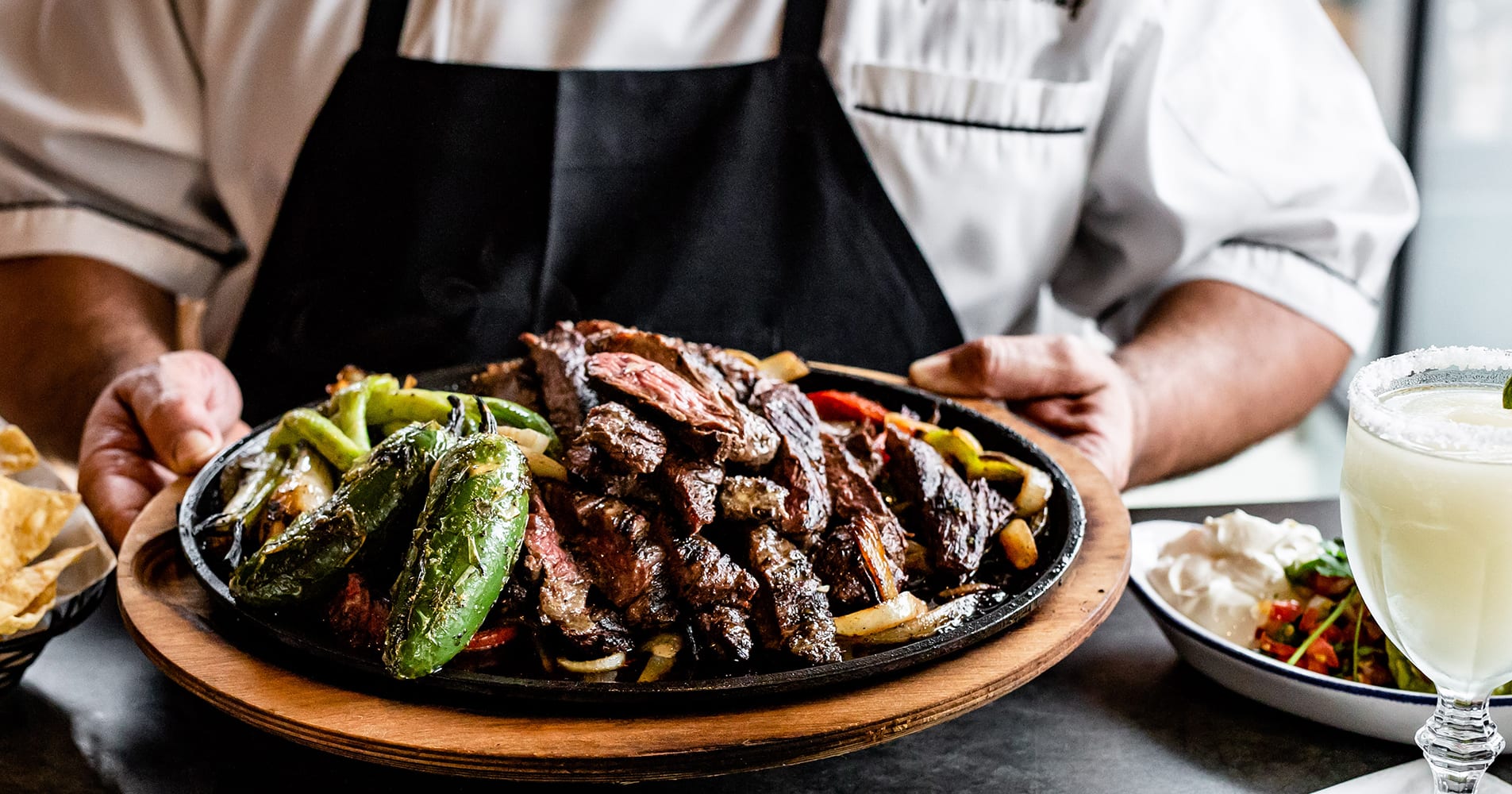Fajitas
[fə·hē·təs]
n: A Tex-Mex favorite popularized by a Houston restaurateur
The origins of many Southern foods are murky; precisely when, where, or thanks to whom they were first eaten shrouded in mystery. But not fajitas. The sizzling skillet of grilled steak, onions, and peppers may have been bastardized by a certain pepper-logoed fast casual joint, but its roots lie in humble tortilleria in Houston. The story of fajitas is the story of María Ninfa Rodríguez Laurenzo—better known as Mama Ninfa. It begins in the Rio Grande Valley, where in the 1930s vaqueros and ranch hands began spinning lesser cuts of beef, often given to them as part of their pay, into portable, filling meals by quickly cooking them over coals and tucking them into tortillas. Laurenzo, a native of the Lower Rio Grande Valley, grew up on the tacos al carbon (cooked over coals).
Flash forward forty years to 1969 Houston, and she found herself widowed with five young children to feed and a struggling tortilla factory on Navigation Boulevard to her name. So she innovated. She outfitted the front room of the tortilleria with tables and chairs and started selling the South Texas tacos. They were a hit: In the first day she sold 250, and introduced the big city of Houston to a piece of her valley heritage in the process. Those pre-assembled tacos al carbon later became build-your-own fajitas—from the Spanish faja for “belt,” it describes the cut of beef also called skirt steak—and a Tex-Mex icon was born. The Original Ninfa’s on Navigation has gone on to become a Houston institution. For the last fifteen years, the kitchen has been helmed by chef Alex Padilla, who grew up around Ninfa’s when his mother worked there in the ’80s. And after all this time, folks are still hungry for the fajitas and their predecessor (tacos al carbon hold a dedicated section on the Ninfa’s menu); together they comprise nearly half of the restaurant’s business.


Mama Ninfa’s Fajitas
share
trending content
-
Cookbook Review: For the Love of Chocolate
by TLP Editors -
Get To Know Durham, North Carolina
-
Our Top 10 Stories of 2025
-
ShellBound: An Anthology of Southern Oyster Culture | Episode 2: North Carolina
by Maggie Ward -
Community Meets Cuisine in Columbia, South Carolina
by TLP's Partners
More From At the Table
-
12 Recipes for a Vegetarian Thanksgiving
-
A Simpler Thanksgiving
-
Halloween Recipe Round-Up
-
The Swordfish Sea Change
-
The Harvest: Apple Recipe Round-Up









